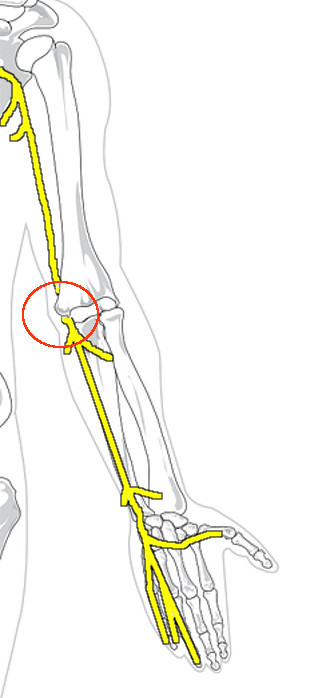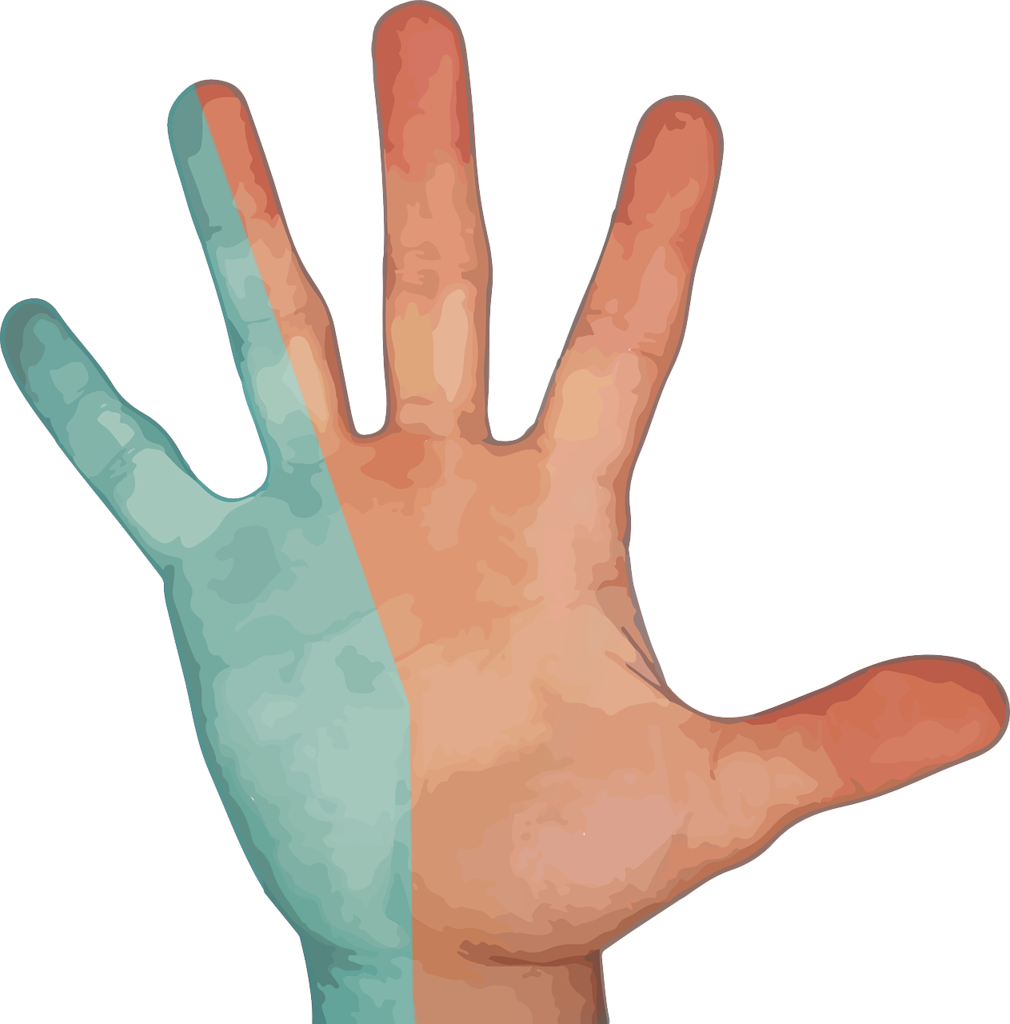The funny bone doesn’t seem to be all that funny when you smack it just right, and shots of pain go through your arm. You’ve probably recoiled after doing so, but why does such a small area hurt so much, and why do we call it the funny bone?
The funny bone is not a bone or any area of bone at all. The pain that is felt after you’ve hit the area of the funny bone comes from the ulnar nerve. The ulnar nerve is one of three major nerves in the arm, with the radial and median nerve being the others. It travels from the neck through the brachial plexus (around the armpit) and down into the hand. As it travels from the neck to the hand, there are several places where it can be compressed, such as under the collarbone, the elbow, and the wrist.
The ulnar nerve at the elbow (the area of the funny bone) travels through the cubital tunnel, which is a tunnel of tissue on the inside of your elbow right under a bony portion of the upper arm bone called the medial epicondyle. This is the spot of the “funny bone” and the area that causes the pain. On a side note, medial epicondylitis, also known as “golfer’s elbow,” can occur at this bony prominence from muscle tendon inflammation, while on the opposite side, lateral epicondylitis (“tennis elbow”) can occur.
The ulnar nerve in this particular area of the elbow is shallow and close to the skin. That’s why this spot causes pain when it’s bumped or hit. Nerves don’t like to be compressed, but when it happens, radiating pain, numbness, or a “shock” can occur.
This particular nerve impulse can travel along the length of the nerve. When you hit your funny bone, you’ll usually experience pain radiating in a distinct pattern. This is because of where the ulnar nerve runs into the hand and where it provides feeling to the skin.
The ulnar nerve doesn’t just supply feeling to the skin, however. It also controls the small muscles of the hand that allow finer movements of the fingers and muscles of the forearm that allow the wrist to flex and the hand to grip. That’s why it’s very difficult to move the wrist and hand after hitting the funny bone or why it takes a while to get the movement back.
So that’s how the funny bone causes pain, but how did it get its name? There are two competing theories on this. One, it could be from a pun taken from the name of the bone in the upper arm called the humerus. Somehow humor could have been taken from this, and since the medial epicondyle is an area on this bone, funny bone could have resulted. But the word humerus in Latin has nothing to do with humor. It comes from the Latin umerus, which means upper arm or shoulder.
Another theory has that it may have come from a different kind of funny, as in the strange kind. For example, “I’ve got a funny feeling.” That isn’t the laughing version but more of the, “Isn’t it strange that when I hit this part of my body, I get this type of sensation and pain.”
Either way, hitting your funny bone doesn’t usually make us laugh, but it does show us that nerves are sensitive and usually don’t like to be disturbed.




